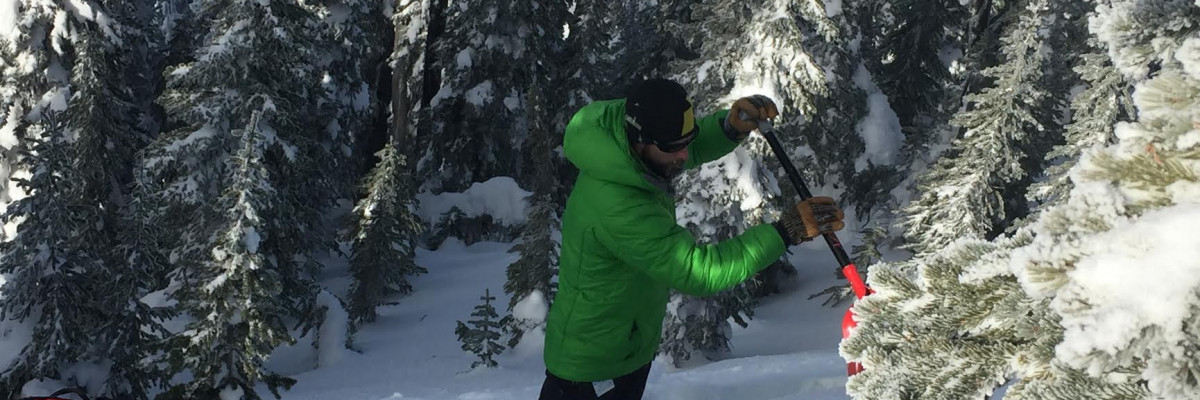The current avalanche danger is CONSIDERABLE for the West Central Montana backcountry on steep wind loaded slopes. A Moderate avalanche danger exits on all other slopes.
Good morning, this is Logan King with the West Central Montana Avalanche Center’s avalanche advisory for Thursday, December 22, 2016. This danger rating does not apply to operating ski areas, expires at midnight tonight and is the sole responsibility of the U.S. Forest Service.
Weather and Snowpack
Across West Central Montana no snow was seen overnight and currently mountain temperatures are in the teens. Ridgetop winds are 20mph gusting to the 30’s out of the WSW at Point Six and are in the teens out of the ESE at Deer Mountain.
Travis and I were in the Rattlesnake yesterday, which has the shallowest snowpack in the advisory area. There is a well defined weak layer at the base of the snow pack throughout the advisory area, that is most prevalent in the Rattlesnake’s shallow snowpack.
The primary avalanche concern will be windslabs, Tuesdays wind event yielded some very stiff windslabs that are stubborn and not very reactive, but the greatest concern will be areas where softer and smaller windslabs have developed. The softer windslabs are failing and actively propagating with moderate force (video). These finding were confirmed by the Snowbowl Ski Patrol who also found the soft windslabs to be reactive during their explosive work yesterday. We had multiple observers in the Bitterroot yesterday as well who also confirmed windslabs to be the greatest concern in the southern part of the advisory area.
The secondary concern will be persistent weak layers. There are well defined facets and depth hoar throughout the region although it is not as reactive in the bitterroot (video) where the snowpack is a little deeper and stronger. The facets are obvious and hard to miss when you dig so take the time to see whats buried in the snow. There are many areas where the facets are underlying an unconsolidated snowpack, be very cautious on any slope where these facets are found especially if there is any cohesion in snow above them.
Avalanche and Weather Outlook
The stable weather pattern should persist through the day and conditions will remain the same. Mild temperatures are expected today as more snow moves into the region tonight and tomorrow.
I will issue the next advisory on Saturday December 24, 2016.
Ski and ride safe.














